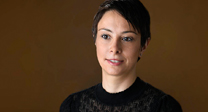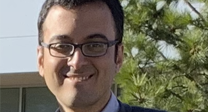Biomedical Computing
Biomedical computing combines the diagnostic and investigative aspects of biology and medical science with the power and problem-solving capabilities of modern computing. Computers are used to accelerate research learning, simulate patient behavior and visualize complex biological models.
Jeff Weiss
Computational Biomechanics
Orly Alter
Computational Biology
Tamara Bidone
Computational Models
Simulations of Biological Systems
Multi-Physics Models of Cancer Cells
Centers and Labs:
- Center for Integrative Biomedical Computing
- Muskuloskeletal Research Laboratory
- Genomic Signal Processing Lab
- Computational Biomechanics Group
Funded Research Projects:
Publications in Biomedical Computing:
  Computational Bioimaging for Medical Diagnosis and Treatment C.R. Johnson. In Communications of the ACM, Vol. 44, No. 3, pp. 74--76. March, 2001. |
   Singular Value Decomposition for Genome-Wide Expression Data Processing and Modeling, O. Alter, P.O. Brown, D. Botstein. In Proceedings of the National Academy of Sciences, Vol. 97, No. 18, Proceedings of the National Academy of Sciences, pp. 10101--10106. August, 2000. DOI: 10.1073/pnas.97.18.10101 |
    An Inverse EEG Problem Solving Environment and its Applications to EEG Source Localization D.M. Weinstein, L. Zhukov, C.R. Johnson. In NeuroImage (suppl.), pp. 921. 2000. |
  Lead-Field Bases for EEG Source Imaging D.M. Weinstein, L. Zhukov, C.R. Johnson. In Annal. Biomed. Eng., Vol. 28, No. 9, pp. 1059--1065. Sep, 2000. |
    Reciprocity Basis for EEG Source Imaging L. Zhukov, D.M. Weinstein, C.R. Johnson. In NeuroImage (suppl.), pp. 598. 2000. |
  Fundamental Quantum Limit to External Force Detection via Monitoring a Single Harmonic Oscillator or Free Mass O. Alter, Y. Yamamoto. In Physics Letters A, Vol. 236, No. 4-6, pp. 226--231. 1999. DOI: 10.1016/S0375-9601(99)00743-4 |
    Lead Field Basis for FEM Source Localization School of Computing Technical Report, D.M. Weinstein, L. Zhukov, C.R. Johnson. No. UUCS-99-014, University of Utah, Salt Lake City, UT October, 1999. |
 Bioelectric Modeling of the P300 in Schizophrenia G.F. Potts, D.M. Weinstein, B.F. O'Donnell M.E., C.R. Johnson, R.W. McCarley. In Biological Psychiatry (suppl.), pp. 396. 1998. |
   Computer Visualization in Medicine C.R. Johnson. In National Forum, Vol. Fall, pp. 17--21. 1998. |







